This article was written by much loved Chengdu comedian (and career scientist) Michal Poznik. He’s left China for the time-being, and is now tooting baijiu’s horn from Vienna, Austria.
If you like this article, you can check out more of his ramblings on his instagram @michalpoznik or YouTube Channel @MichalPoznik.
My first experience trying blue cheese was something to remember. Before then, I would only eat cheese if it was in the form of a stretchy pizza topping. The mouldy blue patches and the grainy structure of this ‘new’ cheese I had tried was alarming, and for a good reason I hated it – but not for long. After a while, the tangy taste and strong aroma became addictive and something I would seek, rather than avoid.
This story can also be true for baijiu. If Western liquor is akin to edam or mozzarella, blue cheese would be the baijiu of the cheese world. The comparison is just harder to see at first.
Baijiu is a colourless liquor just like vodka, and we know what vodka tastes like as we know what to expect. Expectations are one thing, but if you’ve ever taken a sip of baijiu you will know that the reality is very different. It’s horrible, or is it? Maybe if we were to change our perspective of baijiu, we could find a hidden passion for this ancient treat.
Here we will uncover the secrets that make baijiu so fundamentally different from any other spirit from the West. At the end of the day, we live in Sichuan which is a birthplace and one of the biggest producers of baijiu – the world’s most popular liquor.
Ingredients

Anything that contains sugar or starch can be fermented to alcohol. For a fruit spirit you can simply mash the apples and wait for them to ferment. Compare this to baijiu, which is made from grain, sorghum (which is traditional and looks like the low cost brother of corn). Other grains can also be used such as corn, barley, rice and wheat. Yibin’s favourite spirit, Wuliangye (Five Grains Liquid) contains, surprisingly, five grains. Grains are heavy on starch and not sugars, as with whiskey, bourbon and vodka also starting from starch – so what’s the difference? This is the first turn baijiu diverts from western methods.
The West germinate seeds, and then dry them to create a sweet malt. With the use of self-produced enzymes, the grain is forced to initiate change from starch to sugar. In Chinese baijiu a “qu” is used, which is basically an external source of microbes which do the job for you. This results in differences in taste from the very beginning of the baijiu’s journey.
Fermentation
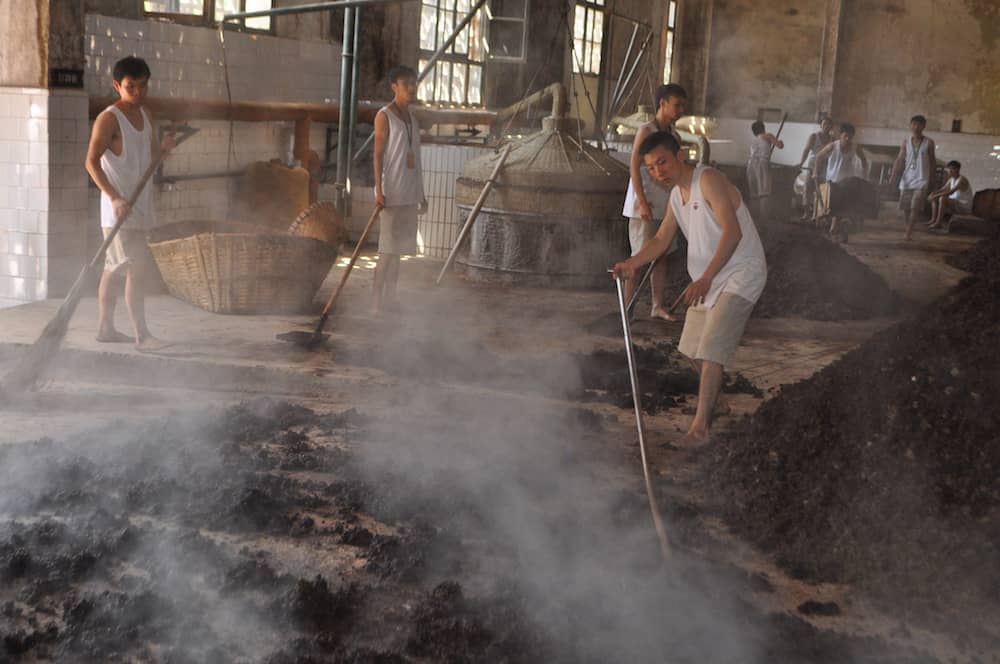
These sugars are then fermented with yeast. In the West, strict procedures are usually applied, which involves brewing a slurry malt and adding only a selected strain of yeast to grow, to get one specific outcome. However, in China, you just dump everything in a pit in the ground – literally. Here is where the tradition comes into place. This is the main reason why you can’t just start exactly the same baijiu production in the heart of France, or even in a different place in China.
The pit is where the magic happens. Over time, a wild brew of yeast and microorganisms is formed, which is perfected and sustained by continuous usage. Qionglai, Luzhou and Yibin (just to name a few) around Chengdu have hundreds of pits. that have been in uninterrupted use for more than 500 years. This perfect chaos produces an extreme variety of fragrant compounds, other than ethanol. The West considers these chemicals to be undesirable, due to their razor sharp taste, however in baijiu this feature is the heart of the liquor.
Distillation
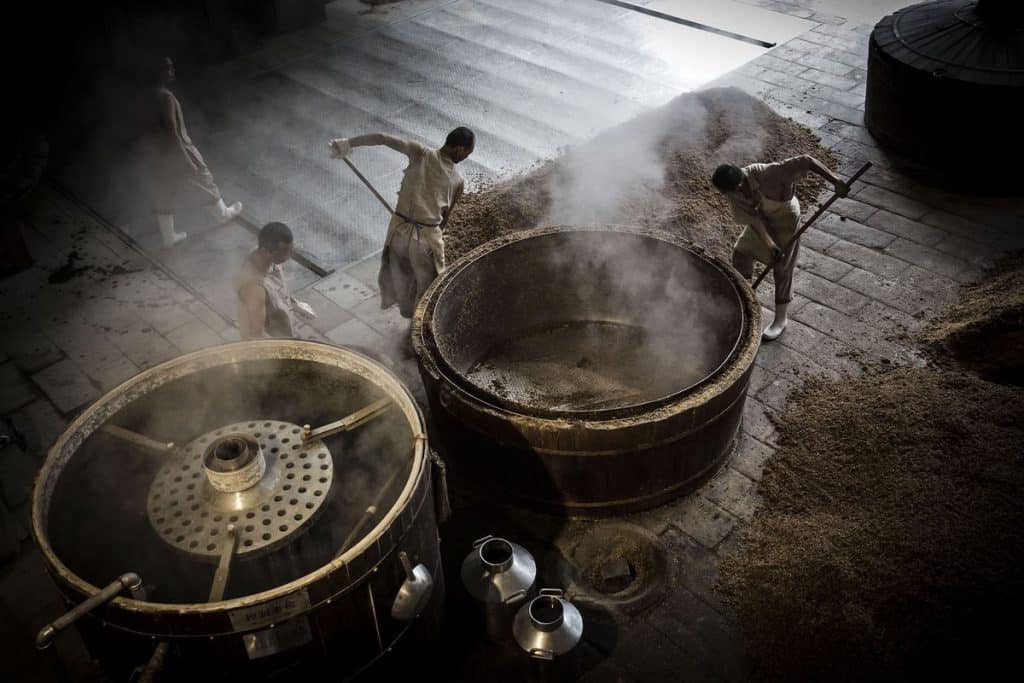
In the West, the fermentation is done in a slurry, which is then heated to boiling point and the alcohol is distilled. Carefully controlling the temperature helps avoid excessive distillation of lighter (methanol) or heavier (strong taste) molecules. In comparison, baijiu slurry is solid, as you dig out solid wet fermented grains. In order to liberate the alcohol from the slurry, they are rushed through with steam. This is a very old technique, but it has an immense impact on taste. If you distill with steam, heavy fragrant molecules are captured in rising vapour and condensed in distillation. Only steam distillation can extract these heavier flavourful molecules. The exact opposite applies in vodka, where multiple distillations eliminate “undesirable taste”.
Aging
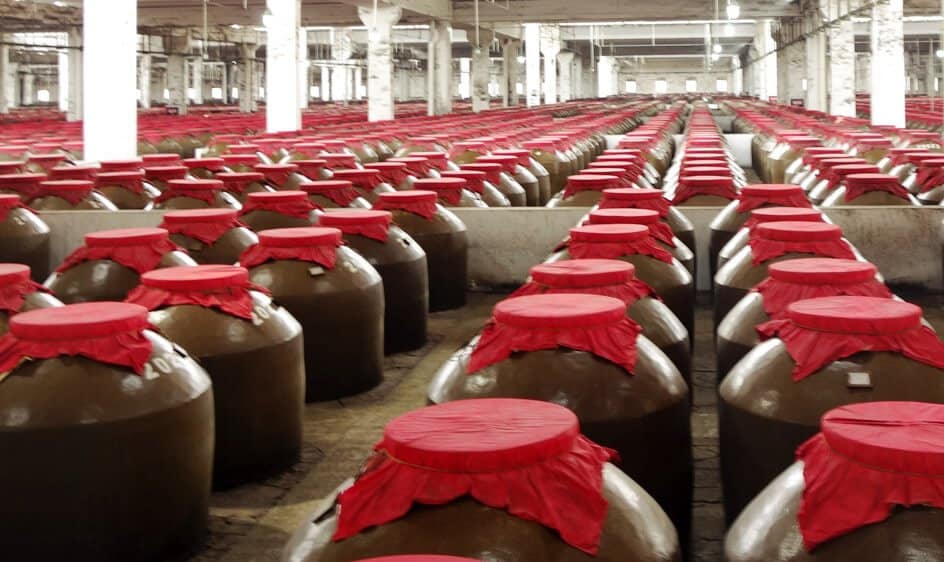
The last step for making baijiu is aging. But whisky is aged as well! Right? Right?! Yes. However, whiskey gets its taste and colour from the wooden barrel. Baijiu needs ceramics, but not for taste, it has all the components. When baijiu ages it recombines the high concentration of the heavier flavour molecules to create new richer aromas. Everyone who has tasted baijiu knows that the taste can be overwhelming- but that’s the point.
Raise The Glass
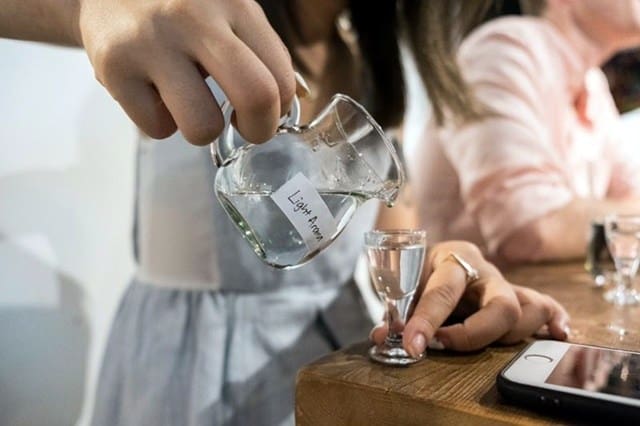
Western liquors are based on improvements in distillation, sanitation, refining technology to bring the clean and desired specific taste. It reflects Western culture: approach and mentality. Baijiu is like China itself as its old, traditional and produced by chaos moulded to perfection. It’s unified yet extremely diverse.
Baijiu is China. This is how we should approach it. It isn’t vodkas brother; it’s barely its second cousin. It has its own rules, history and culture. You may never like it, that’s fine. But when you take your next sip, do not expect cheddar, try to find the blue cheese in it.
Michal Poznik
Organic chemist, stand-up comedian an alcohol enthusiast hiding in Austria, or occasionally at work.
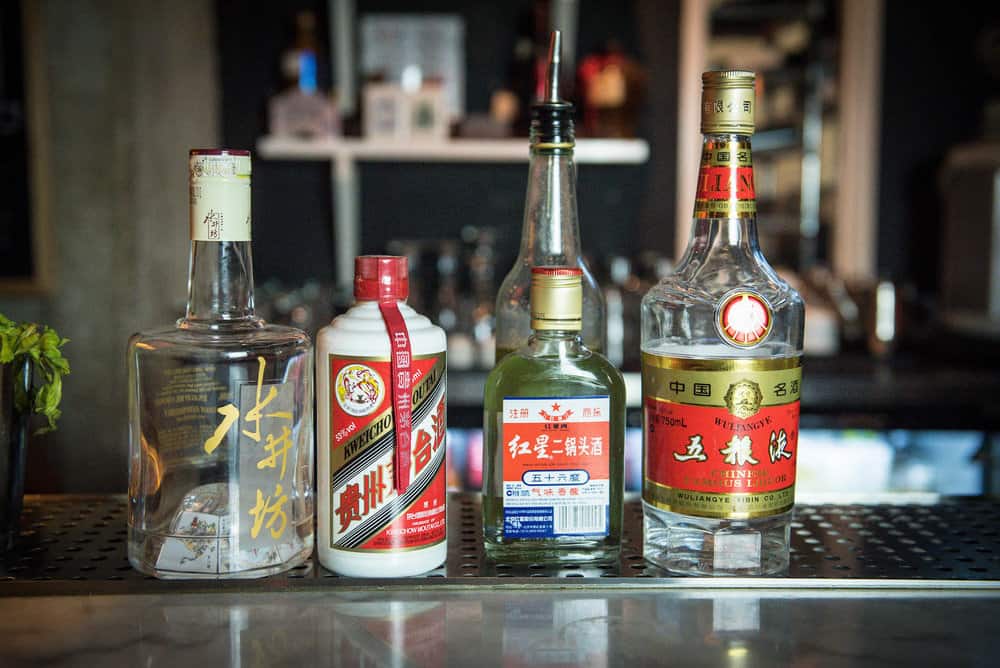





I trully hate Baijiu haha… but like this article